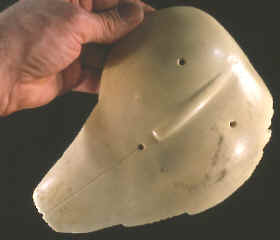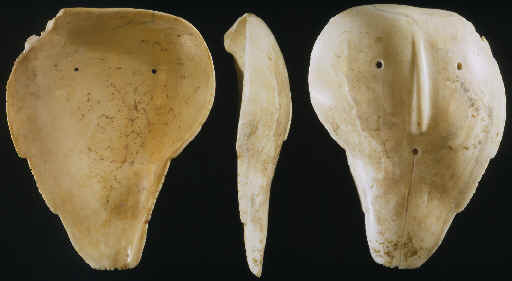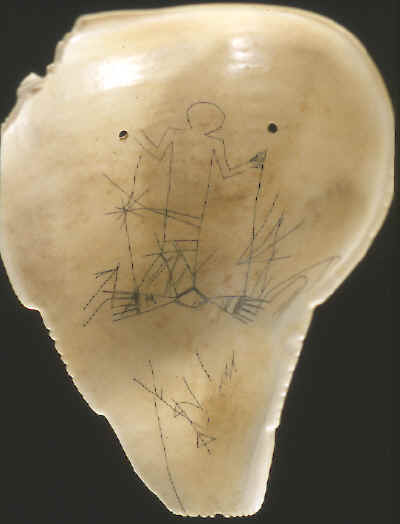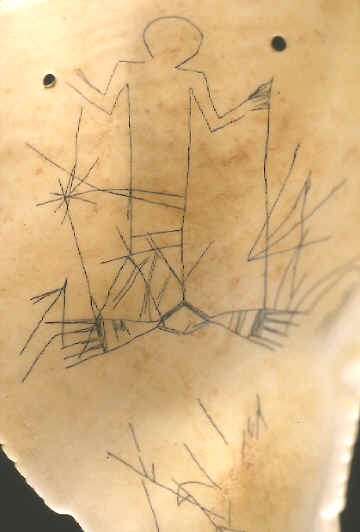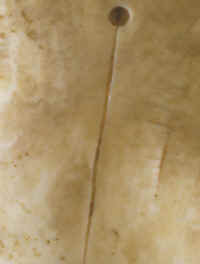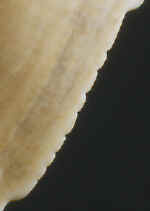|
|
|
The other shell mask from South Dakota was found in a cultivated field in Kingsbury County. Cultural material found near by included Plains Archaic, Plains Woodland and Oneota. It's believed that the Kingsbury shell mask is related to the Oneota cultural material. The mask's upper corner was slightly damaged from the agricultural implement that brought it to the surface. The location of the find was between two prominent lakes on a narrow land bridge less than 4 km long and between .3 to 1 km in width. |
|
|
The Kingsbury County shell mask is in excellent condition. The surface of the shell still retains its original luster. It would be difficult to find a better example. Like the small Bear Butte mask this one also has a long nose that is raised above the surrounding surface and two perforated eye holes. But unlike the other mask this one also has a shallow hole for the mouth and an engraved line that connects the mouth to the bottom edge of the mask. |
|
|
|
|
The Kingsbury County mask is remarkable for its engraving, especially on the back. The front of the mask, around the nose, has vertical line scratches that appear to be only random. But on the back there are very plain geometric patterns and one very prominent figure. |
|
|
|
|
The prominent figure that is engraved on the back of this mask is human-like in form. It has two arms that are spread wide apart and raised upward. There is also a wing-like image just below where its feet would be. |
|
|
|
|
The Kingsbury shell mask also appears to have some traces of red ochre still adhering to some areas. It's most obvious within the cavity of the mouth and the engraved line below. It's not surprising to see red ochre on a shell mask like this example. The two shell masks found in a cave in Montana were also painted with red ochre. Throughout history, for tens of thousands of years, people have used red ochre in connection with items involved in various types of ceremonies. |
|
|
|
|
The Kingsbury County mask has several serrations along the edge that may be a planned part of the mask's design. Another theory by experimental primitive technologist, Larry Kinsella, suggests that these marks may have been caused by the manufacturing process. He has seen similar marks on the edges of some eastern shell gorgets. He believes that at least some of the shell that was used to make gorgets was cut out by first drilling small holes around the area to be removed then cutting between the drilled holes. |
|
| CONTINUE ON TO PAGE THREE | |
|
"REFERENCES"
1912,
Frederic Webb Hodge, "Handbook of American Indians North of
Mexico," pp.539-541. |
|
